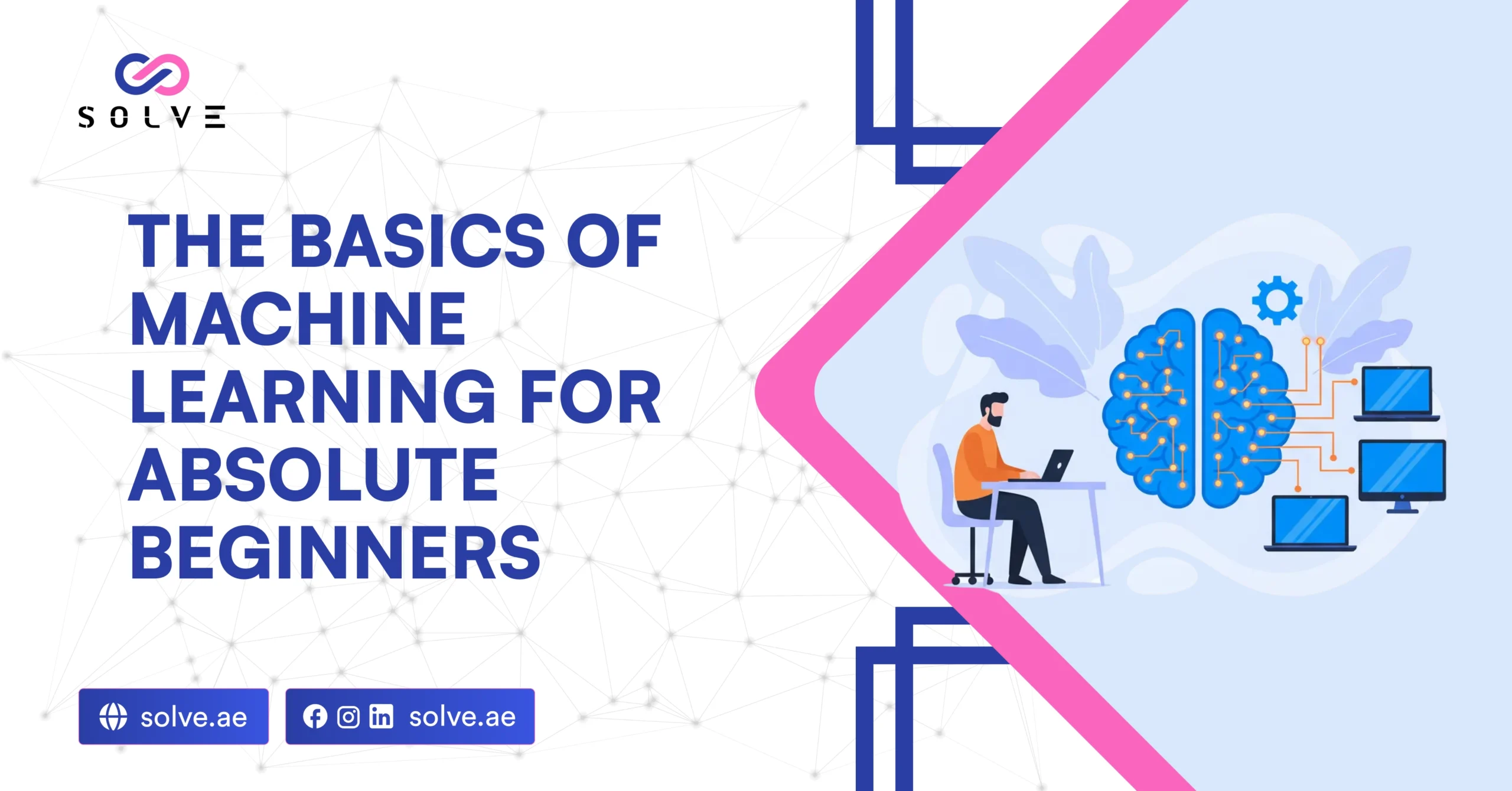- By Vanshika Choudhary
- November 20, 2025
Machine Learning (ML) might look complicated, but it is just giving computers the power to learn from examples instead of needing precise commands. This technology will allow machines to detect patterns, take actions, and improve over time without human intervention. ML is the silent force behind many daily-used tools, from social media to recommendations to smart home devices. This blog attempts the simplest breakdown of ML so even the ignorant ones can comprehend and explore this fascinating domain.
Machine Learning?
- Machine learning is a branch of artificial intelligence that allows computers to learn from data and make predictions without the need for programming through a sequence of actions. Rather than defining rules, we provide the machine with examples, and it discovers the patterns on its own.
For instance, if you provide it with hundreds of pictures of cats and dogs, it will ultimately learn how to distinguish between them. This feature of learning through experience makes ML adaptable, powerful, and widely used in numerous applications, where it improves continuously as more data comes in.
Why Is Machine Learning Important Today?
Machine Learning is essential because the world today is producing enormous volumes of data from various sources like apps, websites, sensors, and devices. People cannot process all this data manually; thus, ML comes to the rescue by doing the processing fast and in an accurate way.
The result is that it brings about better business decisions, makes users feel more cared for, and leads to smarter automation, all in one. Healthcare, finance, retail, and transport are some of the industries where ML is a mainstay for maintaining high accuracy and productivity. All in all, the future of tech will heavily depend on ML as the way out for creativity and problem-solving.
Types of Machine Learning
a) Supervised Learning
Supervised learning trains a model using labeled data, which already contains the correct answers. You can think of it as teaching a child by providing the right solutions along with examples. After the model internalizes these examples, it produces correct results for new data it has not seen before. Practitioners extensively apply this technique to distinguish spam from non-spam emails, forecast stock market movements, and recognize objects in pictures. Machine learning relies heavily on this method, and novices find it the most appealing
b) Unsupervised Learning
Unsupervised learning does exactly the opposite: it supplies the model with unlabeled data and lets the model find hidden patterns itself. It is the system that does the witnessing of data and the combination of the same category of items according to the traits it has uncovered. Companies apply it to group their customers, unveil odd happenings, and suggest appropriate products. It is a great help for the firms, as they can then gain knowledge without the owners of the data having to work through it manually. Check out our latest blog post on The Role of Robotics in Manufacturing and Automation
c) Reinforcement Learning
Reinforcement learning is a very effective technique for training models, which involves punishment and reward for the actions taken. The model gets better and better as it learns which decisions have the highest rewards. This is the case with robotics, gaming, and self-driving cars, where making the right decision is paramount. Aids machines’ learning of the long-term strategies instead of the short-term fixes.
How Does Machine Learning Actually Work?
Step 1: Collect Data
The very first thing the machine-learning process needs to do is to collect data—this data can be in the form of pictures, text, numbers, videos, or even users’ actions. The more and better the quality of the data, the better the model will be in terms of the learning process. Quality data enables the recognition of correct patterns, while bad data leads to the identification of the wrong ones. To get proper data, companies generally invest a lot of time and effort in collecting it from various sources. Thus, if the data is good, the model will get smarter and smarter over time.
Step 2: Clean the Data
The raw data that one often gets is unorganized, has missing information, or is incorrect. Therefore, it has to be cleaned before being used. Cleaning includes the elimination of duplicates, correcting errors, and filling in the gaps. This particular step guarantees that the model is trained on data that is both accurate and consistent. If this is not done, the model may pick up the wrong patterns and give out unreliable results. Data cleaning is considered to be one of the most important and challenging tasks for data professionals.
Step 3: Train the Model
During the training period, the model starts to discover the hidden structure and the interconnections that exist within the dataset. It is an all-consuming process of resources, especially with large amounts of data coming into play. At this moment, the model metaphorically “learns” and turns into a smart one.
Step 4: Test the Model
This practice is essential for an evaluation of how much the model has unerringly interpreted the training patterns. A positive reply from the model indicates that it has ventured a very conservative guess about the region outside the training data. On the contrary, if the performance quality is mediocre, then the model needs tuning and thus upgrading.
Step 5: Improve and Deploy
The model will be more relevant and accurate through the process of continuous learning from new data over time. Thus, deployment is the period when the model either starts helping the users or takes over the task by itself. This last step is not the end of the ML cycle but also the beginning of the constant improvement path.
Where Is Machine Learning Used? (Everyday Example)
Machine Learning is a driving force behind almost every digital experience we encounter every day, even if we don’t notice it. YouTube, Netflix, and Instagram are a few among the many platforms using ML to conclude what content is most relevant to us based on our behavior.
Google Maps and other navigation apps employ ML for the analysis of traffic, which is used in the recommendation of the fastest possible routes. In merely a few seconds, ML is utilized in the banking industry to instantly detect fraudulent activities by recognizing peculiar transactions. ML is also the core technology of online shopping platforms for product recommendations and future user preference predictions.
Do You Need Coding to Start Learning Machine Learning?
A lot of newbies think that ML is strictly for the good coders, but that is not the case in the early stage. Nowadays, you can play with ML with tools such as Google Teachable Machine and Canva AI without writing any code. As you continue to develop your skills, learning Python along with some math concepts like statistics and linear algebra will enable you to create more efficient models.
At this point, you start to see the significance of coding when you begin to create your own ML systems. However, throughout the journey, what matters most are curiosity and consistency rather than coding skills.
How Can Beginners Start Learning Machine Learning?
Beginners are suggested to begin with the most basic by first getting an overview of the basic concepts and terminologies of ML. Learning uncomplicated Python programming is a stepping stone to the use of the practical ML tools and libraries. After that, practicing with small datasets and simple projects can also be a way of building confidence.
Platforms like Kaggle provide datasets for learning and experimentation. Anyone can build a strong foundation in ML — even without a technical background—through regular practice and online resources.
Conclusion
Machine Learning is not a mystery if you know the basics. It is just a matter of enabling computers to learn from instances and refining their capability over time. Because of the widespread applicability in all sectors, Contact us as ML is quickly becoming one of the most sought-after skills of the future. If you can keep curiosity alive and at the same time do the small, daily, consistent steps, then without doubt you can start your journey into this fascinating field of study easily.




